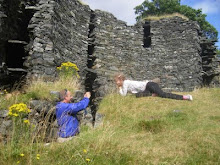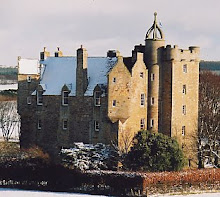Wednesday, August 26, 2009
Release of Abdelbaset Ali Mohmed al-Megrahi
So how did this unusual situation come about?
Well, it all goes back to the Union of Scotland and England to form a United Kingdom in 1707. Scotland was very much the weaker party and was out-negotiated on the all the important issues such as trade, tax and political representation. We did however hold on to institutions that were important to us: our own education system, our own established church and our own legal system.
Until Prime Minister Tony Blair gave Scotland its own parliament and a degree of devolution, justice here was in the hands of the Secretary of State for Scotland, a member of the UK Government. But since 1999 we have elected our own Scottish administration to deal with health, education, prisons, environment ... and justice.
'And so', I am asked, 'is all this going to affect tourism?'
Well I really cannot imagine so. I fully understand the strong feelings expressed, but this release does not reflect any groundswell of pro-Libyan opinion in Scotland. Far from it. This is one man's decision, flowing from a long established and compassionate legal system. Right or wrong, it is now a fait accompli and the Scottish Government is unlikely to have a similar decision to take in the next 500 years.
In my view the big loser in all of this is Libya: that country has missed a unique opportunity to raise its standing in the world by demonstrating dignity, gratitude and respect for the dead.
Saturday, August 22, 2009
Château de Grimaud
 We had just under two hundred people in Edinburgh during The Gathering - a busy time for our small company. And once everyone was safely back home, I took a few welcome days off in the South of France. Castles continued to call though, and I climbed up to the Château de Grimaud, dramatically overlooking the Gulf of St Tropez.
We had just under two hundred people in Edinburgh during The Gathering - a busy time for our small company. And once everyone was safely back home, I took a few welcome days off in the South of France. Castles continued to call though, and I climbed up to the Château de Grimaud, dramatically overlooking the Gulf of St Tropez.
But the charm of Grimaud village with its colourful alleyways and a game of boules in the shade of the plane trees is something we may struggle to match!

Wednesday, August 05, 2009
A Funeral by Loch Ness
The redcoats stopped when they saw the funeral. A troop of six was escorting the bread wagon to Inverness and any gathering of Highlanders was worth a look in 1746 - there might be a wanted man, an illegal weapon. If nothing else, there was no harm in emphasising who controlled the food supplies, controlled the Highlands, following the Battle of Culloden earlier that year.

It wasn’t a major incident in that incident-rich year. But it left its mark. Three marks in fact – the pits made by bullets on the gravestone of a James Fraser, buried in 1730.


















































